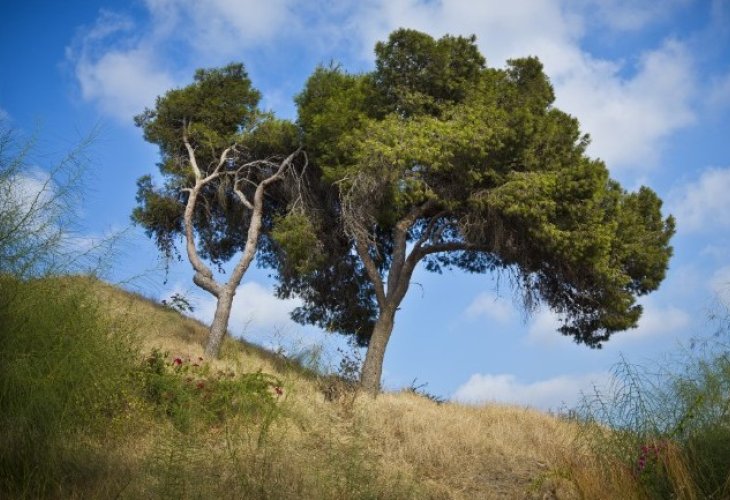Guide to Shemitah: Pruning and Trimming
A concise guide to permissible and forbidden gardening activities during the Sabbatical year

It is forbidden to prune or trim during Shemitah. The prohibited pruning specifically refers to pruning that benefits the tree or its fruits, such as trimming to: increase growth in the tree, improve the tree, add growth to the tree, thicken the tree, enhance the fruits, etc. (as will be explained immediately).
However, trimming that is not intended to improve or grow the tree, but only to maintain the tree and its fruits or to save the tree and its fruits, is permitted.
Prohibited pruning activities considered beneficial for growth and improvement of the tree or its fruits:
Pruning to encourage growth
Pruning dry leaves or branches
Pruning branches to reduce weight burden on the tree
Pruning to thin out the tree to reduce density burden
Pruning damaged branches
Pruning calluses
Permitted pruning activities not considered beneficial to the tree and its fruits but for other purposes, including:
Pruning a branch infested with pests when there's concern they might damage the rest of the tree
Pruning to prevent the tree from dying
Pruning to prevent fruit loss
Pruning leaves to save fruit from rotting
Pruning to save the tree from partial damage or loss, even if small, and also in cases of questionable damage
Pruning branches to use as covering for a sukkah (provided it's evident this isn't done for the purpose of pruning the tree, such as only pruning one side of the tree)
Pruning trees growing in a yard or alongside public areas that interfere with pedestrian traffic
Pruning branches that interfere with electrical wires
Pruning trees for firewood
Pruning tree thorns that interfere with harvesting
Pruning or relocating a tree if the space is needed, such as for building a house or similar (consult with a rabbi on how to relocate the tree permissibly)
Pruning flowers for decoration, as long as it's not done to encourage growth, such as picking flowers to place in a home vase (not for sale). For flowers where pruning stimulates additional growth, try to cut the flower at a point that doesn't encourage growth, and it's best not to use a specialized pruning tool but to pluck by hand
Pruning a "Gaat" tree is debated; one may be lenient and prune it, but should prune in a location that minimally encourages growth
All permission to prune in an allowed manner is contingent on the person not pruning to improve the tree and its fruits at all, but pruning for another purpose.
All permission to prune in an allowed manner applies specifically when the tree has not produced fruit. If the tree has produced fruit, there are several rules that will be explained below in the topic "Loss of Shemitah Fruits."
A tree that needs to be pruned to prevent damage is permitted to be pruned even if it has fruits. This is not considered a waste of Shemitah fruits, since without pruning, the tree or part of it could be lost.
It was explained above that Shemitah nowadays is rabbinic law, and in cases of doubt, one can be lenient. Therefore, if there is doubt whether the tree might be damaged, pruning is permitted to prevent damage to the tree under the principle of "in rabbinic doubts, rule leniently."
Any action prohibited during Shemitah that was done anyway, the produce remains permitted. For example: fields that were improperly worked or trees that were improperly pruned, the fruits are still permitted for consumption.
A person who violated the prohibition and pruned their field during the Shemitah year, although they committed a violation, is not penalized from planting their field after the Shemitah year ends.
Very important: In any case where cutting or pruning is permitted during Shemitah (according to the rules explained above), it is highly advisable to consult with a rabbi, as sometimes it's preferable to do it with a change in method or through a non-Jew.

